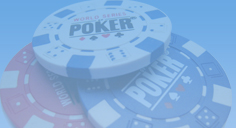Making a 'Raise' in Poker
A raise is a bet in poker. It is a bet amount that other players need to match if they wish to remain in the hand. By raising, the player is increasing the size of the pot putting more in the middle to fight for. For other players to call the raise, they will need to match the bet made or fold and leave the hand. Players will post a raise either because they have a big hand and want to extract chips from their opponents, or to bluff others out of the pot. Remember, where all other players exit the hand, the last man standing wins the pot. The fact that you don't need to actually have the best hand to win is one of the most appealing traits of the game.
The difficulty up against a raise is working out whether the player has a made hand, a drawing hand or is at it. Unfortunately whilst there's no way to know for sure, there's a lot you can pick up that will point you to the answer. This experience will come in time. As you get to grips with working out a players different ranges, this combined with the information they give away will be a solid help to making the best informed decision you can. It also helps to know your opponents.
If player 1 makes an initial raise and player 2 then raises the raise by putting in a bigger raise, this is called a re-raise. Players who re-raise must do so in denominations of the initial bet, for instance, a player raises $10, the next player could not re-raise a further $6 - it would need to be a minimum of $10. The reason behind this minimum raise rules is to prevent 'nuisance raises', in which a player would raise a $50 raise by a further 0.50 cents. This would waste time and have no real effect on the outcome or value of the pot.
It's also important to consider what the raise signifies. The aim of a raise is to show strength in your holdings - .i.e. you have the winning hand, however deception plays a big part in poker. The fact that players cards are hidden means a player can raise no matter the cards he holds. What tends to occur is that players who show strength are usually weak and vice versa. Most players know this so as you can imagine, it can become a bit of a mind game.
This is where intelligent play comes into it. If you are looking for callers, you need to look weak so you may slow play or make an over bet, which is a raise bigger than the value of the pot. Alternatively you may make an undersized raise to lure your opponents in. Anything that might encourage your opponent to think he can force you off the hand. There are a number of different ways to make a raise in order to influence how your opponents respond. Some maniacs raise all the time, which makes them difficult to read as when they do actually hit big hands, you can't distinguish the likely good hands from the likely bluffs. Other players who raise after folding for an hour, aren't exactly disguising their hands.
A popular play is the check-raise which is a deceptive play in which you act weak to get your opponent to make a bet, then make a larger bet to take down the pot.



Popular Top-Lists
Recommended Visit













 Top UK Poker Options
Top UK Poker Options